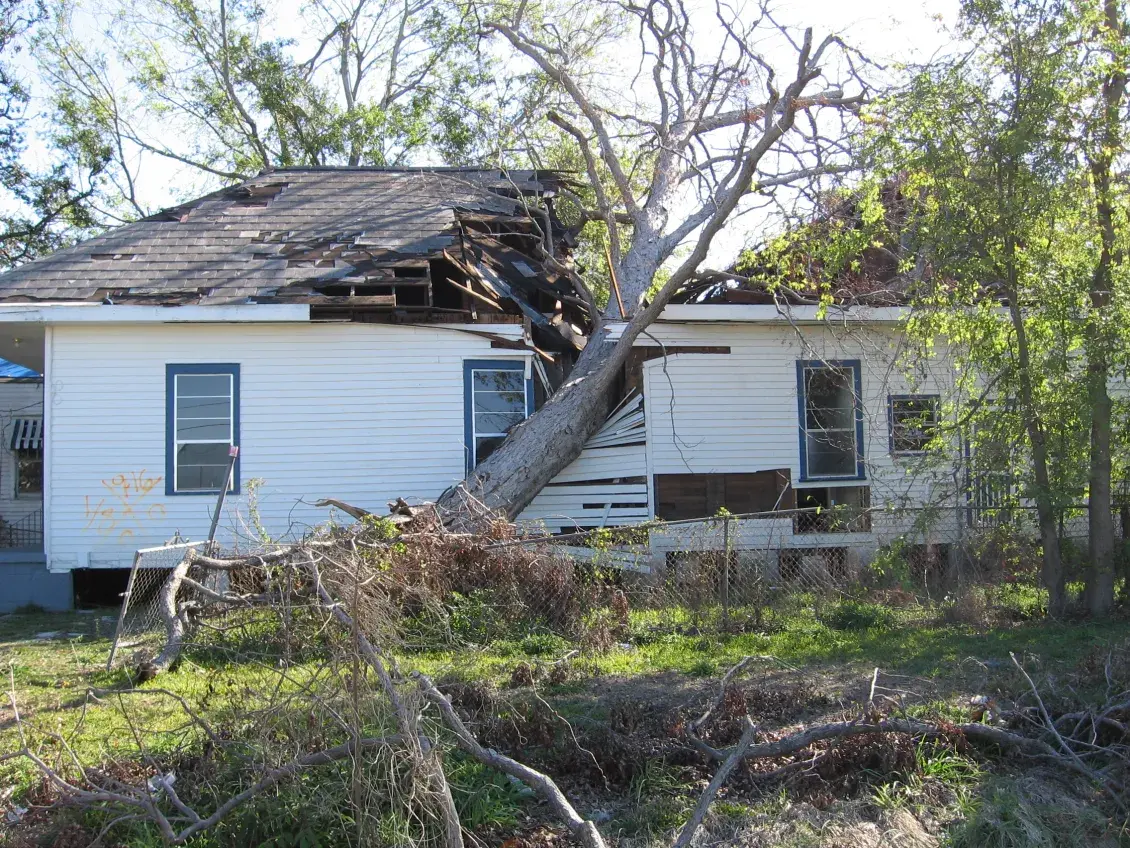When a hurricane, wildfire or tornado hits, tens of thousands of households can become homeless in a matter of hours. Homes destroyed or substantially damaged by wind, water, smoke and flames that make them uninhabitable, even if temporarily, can leave families in immediate need of a place to live.
Most disaster survivors eventually regain some form of permanent housing, either in the same location or somewhere new, where they can begin the process of restarting their lives. But for some, a disaster can kick off an extended period of housing instability, marked by stays in temporary locations such as hotels, shelters, with friends or family, or even in unsheltered locations. Unable to access stable, affordable housing, people with no place to live eventually blend into the millions who experience homelessness each year in the United States.
Given growing concerns over more frequent and severe disasters, as well as rising rates of homelessness in the United States, one might think researchers would be motivated to quantify and understand the connections between these trends. However, as I recently found in my own search for literature on the disaster-homelessness nexus, there are few studies on this topic. Moreover, what research does exist focuses almost exclusively on either hypothetical or single-event contexts, which limit what conclusions can be drawn regarding the extent of disasters as a contributing factor to homelessness.
While scholarship on the scale of post-disaster homelessness is sparse, the existing literature does offer clues as to why this topic remains elusive, as well as options for how to fill this gap. Here are the main sources of disconnect between studies on disaster outcomes and housing instability, and what can be done to provide a better understanding of post-disaster housing experiences that can lead to homelessness.
Disconnects in Language, Policy, and Data
Need for Consistent Terminology: Among the reasons for the scant research on post-disaster homelessness is the lack of consistent terminology to describe people in this situation. Disaster survivors who do not return to their former home are often called “evacuees” and described as being “displaced.” These terms apply equally to people who are temporarily dislocated from their homes due to evacuation orders, loss of access or utility service, or repairable damage, as well as to those who experience full destruction of their home with or without the possibility of rebuilding. On the other hand, people who experience long-term homelessness are generally described as being “unhoused” or “unsheltered” due to well-documented systemic inequities that foster and compound housing instability for low-income families. These terms ignore the existence of overlaps in the Venn diagram between these two groups.
Differences in Policy and Programmatic Responses: The language used to distinguish disaster survivors from people experiencing homelessness flows through to policy and programmatic approaches to addressing each population’s needs. Disaster-assistance options only address needs directly related to the impacts of the disaster itself, without considering any underlying pre-disaster vulnerabilities that may influence a household’s likelihood of experiencing post-disaster housing instability. Programs to address homelessness, meanwhile, are not designed to support mass-displacement events like disasters. They also rely on existing housing supplies that may be more susceptible to weather-related damage and are already underfunded relative to affordable housing needs generally.
Difficult Data: Lastly, data on housing trajectories among disaster survivors and people experiencing homelessness is notoriously difficult to collect. While information on the physical and financial impacts of disasters — e.g., how many homes, buildings, and systems are damaged and the costs to repair them — are prevalent, few options exist to track outcomes for people, especially over the long term. Both populations are generally transient and may experience trauma or other stressors that make consistent, reliable, and compassionate data collection challenging. The lack of baseline data preceding their experience with a disaster or homelessness further limits the longitudinal information that can be gleaned to solely observing post-event outcomes. Without this information, ideally collected from a nationally representative sample, estimates of the true impact of disasters on homelessness in the United States will likely remain elusive.
Filling the Gap
These challenges are not, however, insurmountable. The following steps could improve our understanding about post-disaster housing trajectories generally, and the degree to which such paths can and do lead to housing instability and homelessness.
- Acknowledge more broadly the connections between disaster and homelessness research. Most of the current scholarship on post-disaster housing trajectories only theorizes about homelessness as a potential outcome, while literature on housing instability rarely mentions the effect that disasters can have on precipitating an experience with homelessness. Greater integration of these two fields of study is a necessary first step in bridging the divide in our collective understanding of the pathways from disaster to homelessness
- Support efforts to collect longitudinal data on post-disaster housing outcomes. With these research collaborations must also come better data collection on households that experience housing instability following disasters. This data should track the characteristics of such households to identify those at higher risk for worse disaster impacts, lower receipt of disaster assistance, and longer recovery periods, both to highlight the scale of post-disaster homelessness, and call out the gaps in the disaster recovery process that fail to prevent it.
- Develop policies and programs tailored to the specific needs of people experiencing or at risk of homelessness following a disaster. This includes options that can support short-term housing while local infrastructure and public systems are under repair, as well as long-term options that seek not just to return households to their pre-disaster housing situations, but that also address existing vulnerabilities along with post-disaster needs.
With the collective effort of researchers, practitioners, advocates and policymakers working together to improve data collection and understanding about the links between disaster outcomes and homelessness, it is possible to not only quantify the scale of post-disaster homelessness but also develop effective pre- and post-disaster mitigation strategies to reduce it.



